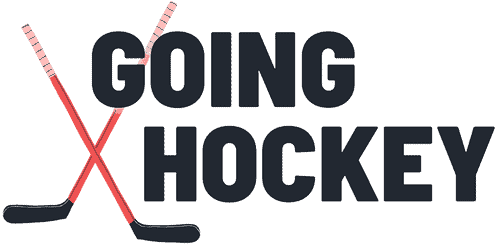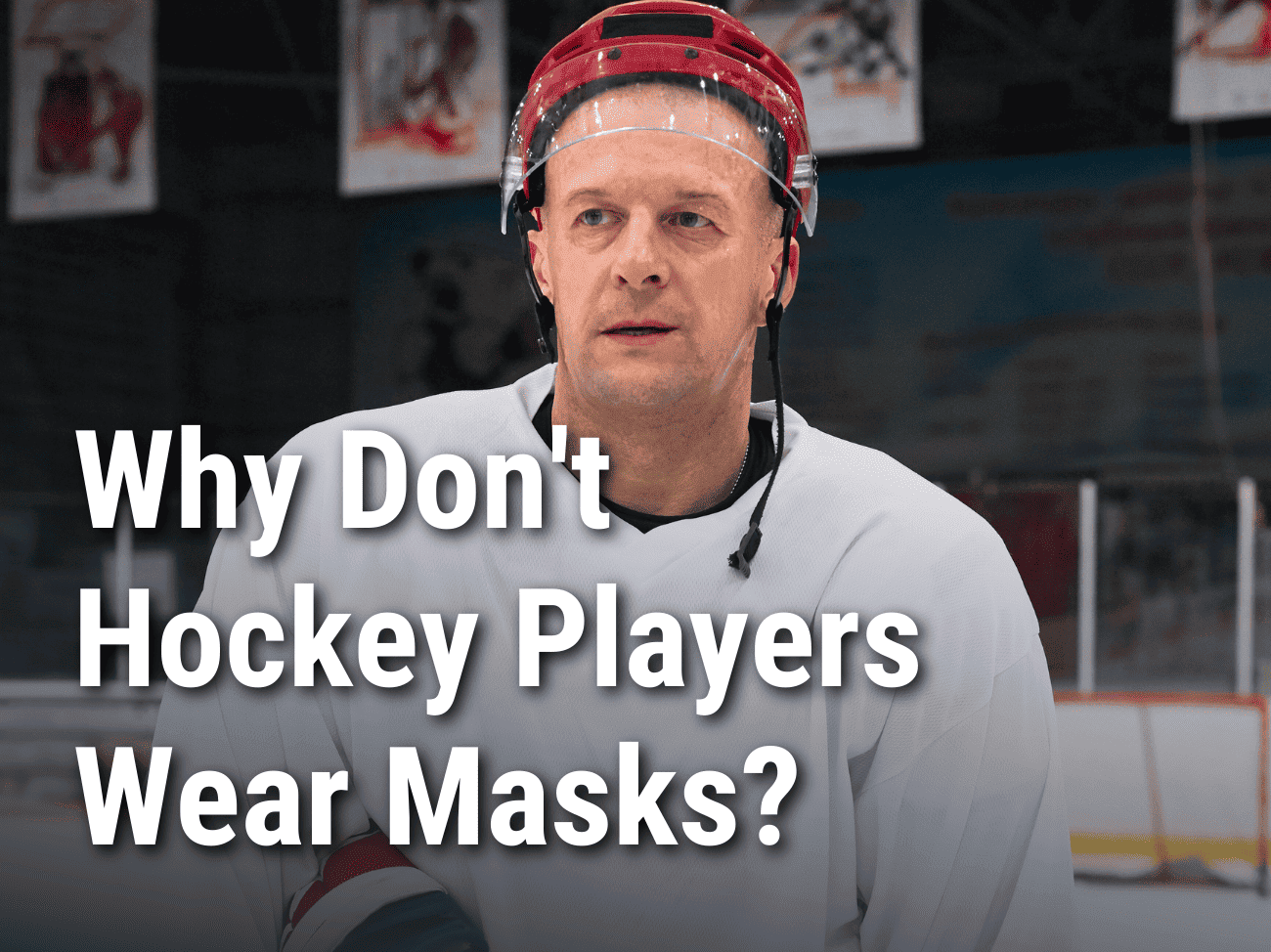long captured the hearts of fans worldwide. However, a curious aspect of the sport that often raises eyebrows is the absence of full face masks. Why don’t hockey players wear full face masks?
(From my perspective as a hockey player, it’s pretty obvious.)
Visibility, convenience, and fighting are the 3 main reasons why hockey players don’t wear full face masks.
Full face masks can negatively affect a player’s vision, hinder their ability to perform certain tasks, and are incompatible with the cultural traditions of the sport.

Why Hockey Players Don’t Wear Full Face Masks
Visibility
In a fast-paced, contact sport like hockey, visibility is of the utmost importance. One bad pass can lead to a turnover and cost your team the game. Or worse yet, one unforeseen player hidden in your blind spot can put you out for the season.
The consequences for poor vision are high. And that’s why at the highest level hockey players don’t take any chances with poor vision. Simply put, not wearing a mask grants maximum visibility.
Hockey Player POV
Wearing a full face mask improves all aspects of vision, but the most notable difference is in the lower field of vision – which is an extremely important area.
When a player is skating with the puck, the lower periphery of their vision contains the puck, stick, and opposing player’s stick. This lower-peripheral vision is vital for shooting, passing, and stick-handling without having to put one’s head down – which can be a dangerous maneuver.
When it comes to field of vision, the difference between wearing a mask and not wearing a mask is like night and day.
Convenience
Convenience is the secondary factor – this point may be more applicable to casual players than pros, but it’s still relevent nonetheless.
Wearing a mask is annoying. Having to take off your glove every time you want to scratch your nose, or having to slot a water bottle through one of the square openings in the cage is super inconvenient.
Not wearing a mask affords you all of the everyday conveniences of not wearing a mask, while also allowing you to do all the things hockey players love doing like spitting, talking smack, drinking water, and blowing their nose.
If you’ve ever wondered why hockey players need to spit so much, check out our article: Why Do Hockey Players Spit?
Fighting
Although there are many traditional reasons why hockey players don’t wear full face masks, there is one that stands out above the others: fighting.
For better or for worse, fighting is central to the culture of ice hockey. For reasons why fighting has stayed a part of hockey, see: Why Fighting Is Good In Hockey.
There is a debate to be had about whether fighting is necessary in hockey but for the time being, it seems like it’s here to stay. In theory, fighting has a net-positive effect on the sport.
Fighting reduces the number of “dirty plays” that occur in hockey because with fighting everyone understands that there are consequences to their actions.
The problem with full face masks is that it’s not possible to fight – unless you’re punching each other in the mask. You could take your helmets off completely, but from a safety standpoint, it’s far more dangerous to fight without helmets than to fight without masks.

Do NHL Players Have to Wear Face Masks?
NHL players don’t have to wear full face masks, but all new players do have to wear visors, or half-shields, as they’re sometimes called.
A hockey visor is just a piece of clear plastic that’s screwed onto the helmet, in order to cover and protect the eyes of a player. Although visors can technically be classified as masks, they are less optically obstructive than a traditional cage, or bubble mask.
There are very minor distortions caused by the curvature of the plastic, but for the most part, visors maintain and enable nearly 100% normal visibility.
NHL Visor Mandate – 2013
In 2013 the NHL made hockey visors compulsory for all players with less than 25 games of experience. It’s now known as “Rule 9.7” in the NHL rule book.
The NHL didn’t mandate visors across all players, which means there are still some visorless players out there. Here are some players who sport the no-visor look in the NHL:
- Jamie Benn
- Ryan O’Reilly
- Ryan Reeves
- Zach Kassian
- Matt Martin
- Zach Bogosian
Full Face Masks in the NHL
Although full face masks aren’t mandatory in the NHL, it doesn’t mean that NHL players never wear full face masks.
You may sometimes notice an NHL player sporting a full face mask or some kind of metal jaw contraption. This usually means that the player is recovering from an injury.
A broken nose, jaw, or orbital bone will usually result in a player wearing protective masks to protect themselves from further injury. If you’ve ever wondered how these facial injuries happen, and how you can avoid them, check out our article: Why Do Hockey Players Lose Their Teeth?

What Is the History of the Hockey Mask?
1959: Jacques Plante of the Montreal Canadiens becomes the first NHL goalie to wear a mask.
1964: Kenneth William Clay invents the first ever recorded hockey visor after suffering an eye injury.
1979: NHL makes hockey helmets mandatory for all incoming players.
1980–2006: Visor usage slowly grows (see: 1980’s Jari Jurri)
2006: AHL makes hockey visors mandatory for all its players.
2012: Rate of visor usage in the NHL reaches 73%.
2013: NHL makes hockey visors mandatory for incoming players.

Cat Eye Masks – What Are They and Why Are They Illegal?
A cat eye mask is a type of goalie mask that basically every NHL goalie uses. They are, however, illegal to use in most youth hockey leagues.
The cat eye mask is named for the two cat eye-like shapes that appear in the front-center area of the cage. The cage is designed to provide the goalie with maximum visibility in their central field of vision.
The cat eye mask is however illegal to use in many youth hockey leagues – most notably USA Hockey. Youth hockey goalies are sometimes ejected from games or forced to switch helmets if caught using cat eye masks. The apparent reason for this is that the masks don’t provide sufficient protection to the goalie’s face, specifically in the cat eye regions.
It’s true that the nob of a hockey stick can fit through a cat eye mask, but then again the odds of that occurring are extremely low.

Downsides of Not Wearing a Full Face Mask
There is really only one downside of not wearing a full face mask as a hockey player, and that’s getting hit in the face.
Getting hit in the face isn’t super common, but it does happen every now and then. The two factors that affect your odds of getting hit in the face are:
- The intensity at which you’re playing hockey.
- The caliber of hockey players you’re playing with.
If you are playing intensely with beginner hockey players your chances of getting hit in the face will be higher. Whereas, if you are playing gently with experienced hockey players your chances will be lower. It makes sense when you consider some of the most common ways of getting hit in the face:
- High sticks
- Face to the boards
- Pucks to the face
Even within the cases listed above, high sticks definitely account for the majority of facial injuries. High sticks to the face usually occur when an opposing player goes to lift your stick with their stick, misses, and hits you on their upswing.
Just remaining aware of which players have control of their sticks and which don’t can really help reduce your chances of you getting hit in the face.


Leave a Reply